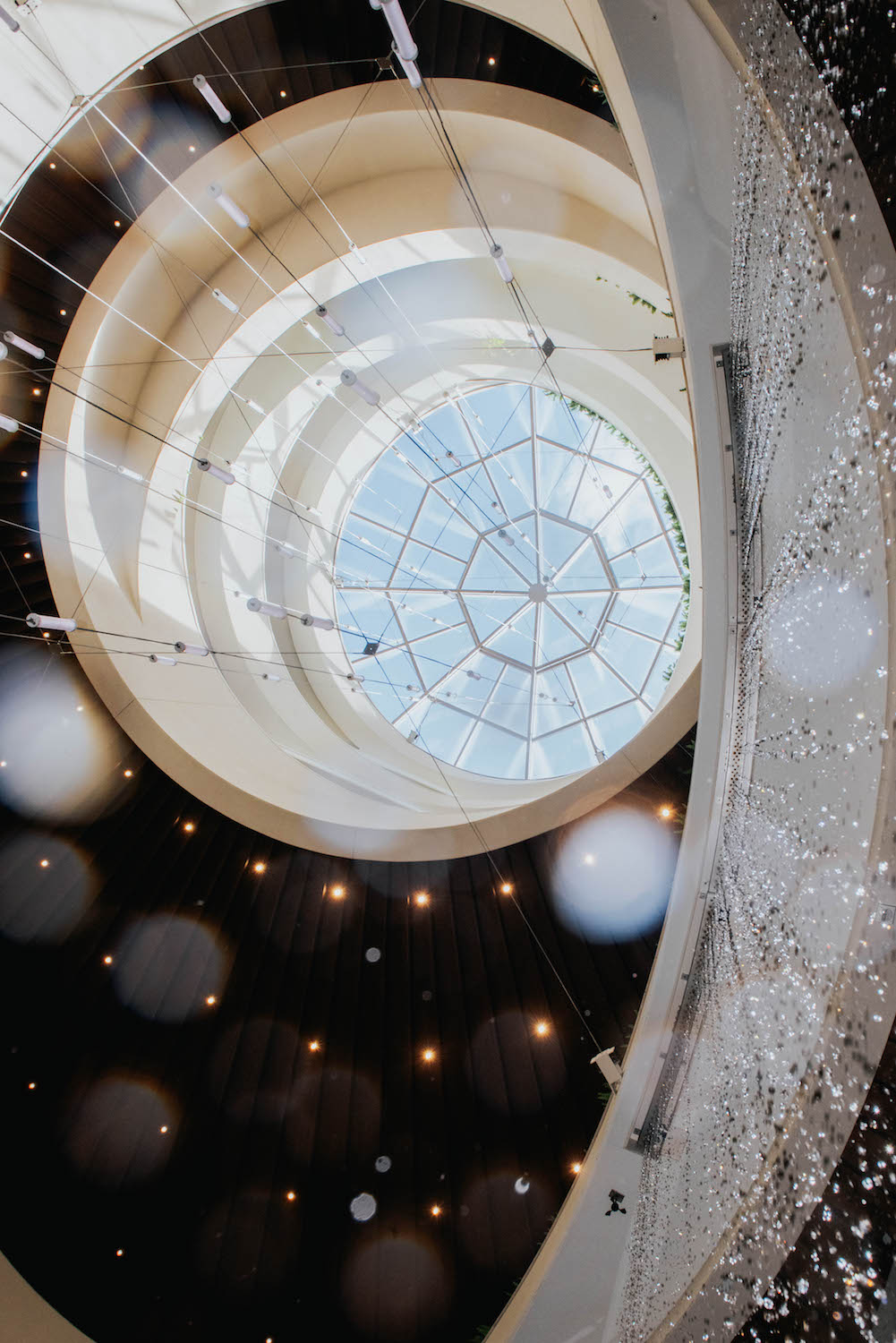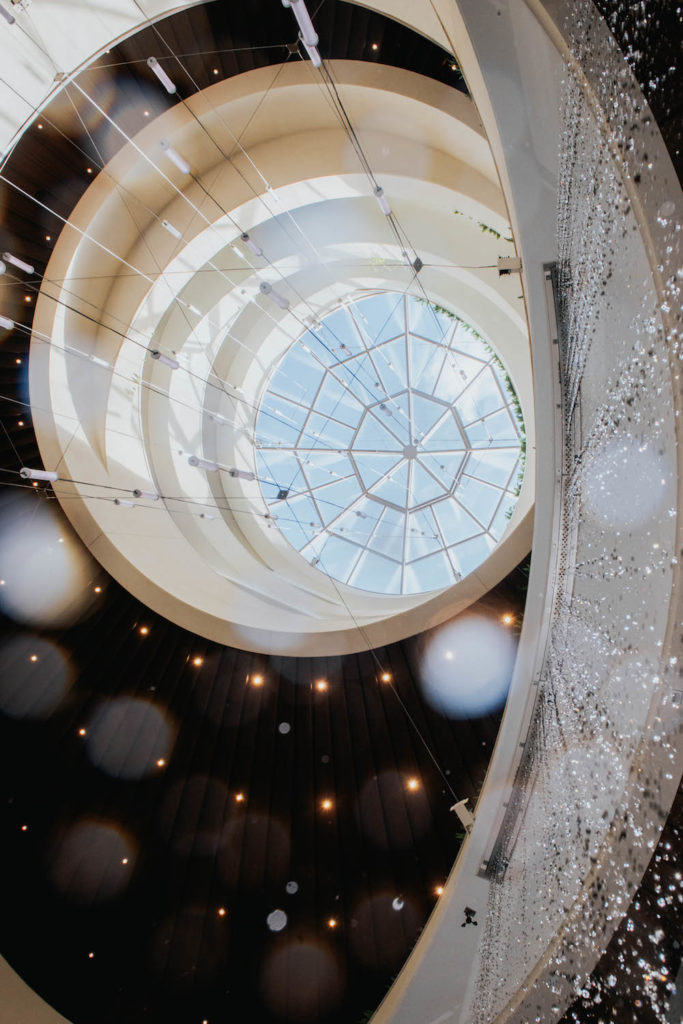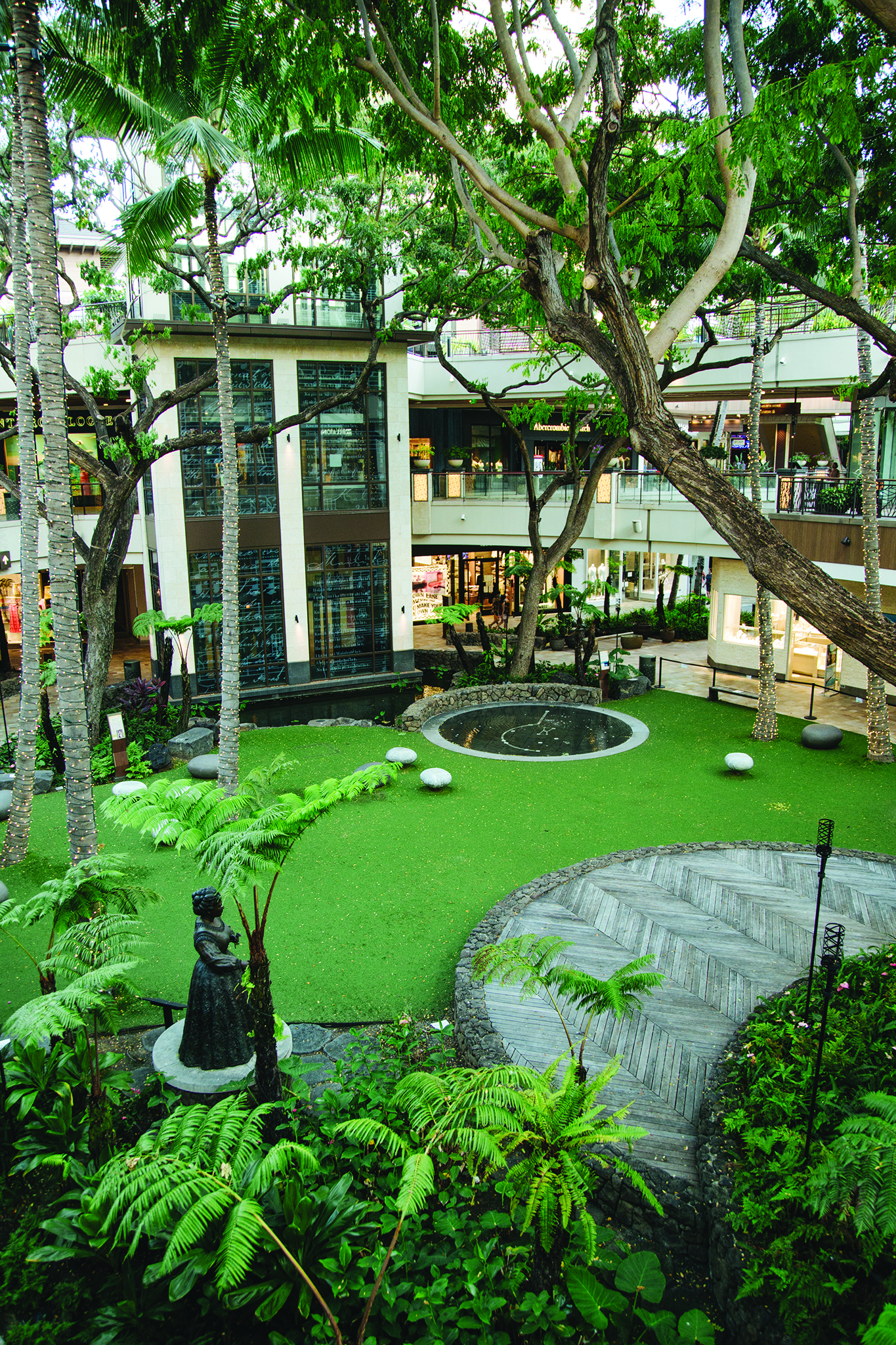
Courting the Past

Learn about the design inspiration behind International Market Place’s Mauka Court.
✏️ LINDSEY KESEL
📸 CHRIS ROHRER
歴史を伝えて
建築家、エンジニア、文化アドバイザーで構成されるチームのコラボレーションによって設計されたインターナショナルマーケットプレイスは、そのデザインを通じて、ワイキキの物語
を伝えている。ショッピングセンター内のマウカコートには、ハワイ流のおもてなしを象徴するデザインや山から海へ流れる豊かな水の要素が取り入れられている。
International Market Place celebrates the history of the land on which it stands through a[ll1] property-wide visual narrative inspired ahupua‘a, an ancient Hawaiian system of land division that divided each island into self-sustaining moku (wedge-shaped districts) running from mauka (mountain) to makai (sea). The fertile ahupua‘a of Waikīkī provided an abundance of resources to sustain life, perpetuated for centuries by the Hawaiians’ dedication to cooperation and stewardship.
Long ago, Waikīkī was rich with wai that traveled from the slopes of Mānoa Valley down to irrigate lo[ll2]‘i kalo (taro fields) and loko i‘a (fish ponds). Development prompted the diversion of the vital ʻĀpuakēhau Stream that carried wai from the uplands to Kaluaokau, the subdivision where Queen[ll3] Emma, wife of King Kamehameha IV and queen of Hawai‘i from 1856 to 1863, made her home. When dwindling water resources inhibited farming and fishing, Queen Emma set aside much of her land in trust to ensure the people of Hawai‘i would continue to prosper—including the Kaluaokau site that would later host International Market Place.

Today, a recreated ʻĀpuakēhau Stream flows inside International Market Place, mirroring the stream’s original path and connecting the center’s three[ll4] courts: Waikīkī Court, Queen’s Court, and Banyan Court. As the entry point for visitors arriving from Kūhiō Avenue, Waikīkī Court’s grotto-like environment integrates three design expressions that emulate the mauka side of the ahupua‘a of Waikīkī.
Ka Welina, meaning “the welcome,” is a kiosk space where cultural concierges greet guests and offer tours and wayfinding assistance. The Hawaiian welcome chant “Welina Mānoa” is inscribed on a nearby column, praising the life-giving rains of Mānoa and beckoning Kahaukani, Mānoa’s guardian wind. The layout incorporates natural materials, such as limestone, basalt, and wood, along with patterns found in traditional lauhala weaving, kapa cloth, and rope lashing to honor the artistry and engineering of early kanaka maoli (Native Hawaiians).
Opposite Ka Welina, Waikīkī Court’s Waiakeakua rain curtain originates from the edge of the third-floor balcony and cascades to the ground floor. Named for the waterfall in the heart of Mānoa Valley where the ‘Āpuakēhau Stream originates, the Waiakeakua water feature cascades into a base of lush ferns and greenery to symbolize the fertile history of the area, from Hawaiian taro farms to the Chinese rice fields of the plantation era.

Between the rain curtain and concierge, the elongated lights of the mall’s ‘Āpuakēhau light feature are suspended on staggered vertical wires to imitate the rain drops that nourished the ‘ahupua‘a of Waikīkī. Hawaiian for “basket of dew,” the term ‘āpuakēhau is likely one of the more than 200 names Hawaiians used in reference to specific types of rain, and also recalls the ancient Hawaiian practice of using taro leaves, bamboo trunks, and gourds to collect and store rainwater for religious and medicinal purposes. In the evening hours, the hanging lights are reflected in the skylight above, creating a radiant scene.
Reminiscent of the pre-contact era when Hawaiian settlers worked the land, Waikīkī Court is the first stop in a historical timeline woven throughout the shopping center that pays tribute the people and periods that impacted Waikīkī. Visitors can follow the ‘Āpuakēhau Stream makai from Waikīkī Court to explore Queen’s Court, which honors the life and legacy of Queen Emma and the royal heritage of Kaluaokau. Further downstream, Banyan Court recalls Waikīkī’s golden age of tourism, when Don the Beachcomber opened the original marketplace in the late 1950s.
Through thoughtful collaboration among a large team of architects, engineers, and cultural advisors, International Market Place tells the story of Waīkikī through design. “We wanted to create a unique arrival experience with the Waikīkī Court by sharing the origin of the ʻĀpuakēhau Stream and expanding on the values of hospitality and stewardship that Queen Emma held,” says Reuben Chock, vice president of Honolulu-based WCIT Architecture, the design firm responsible for the historical research, cultural consulting, and design of International Market Place’s major courtyards. “There are many subtle touches for guests to discover as they wander around and take it all in.”








